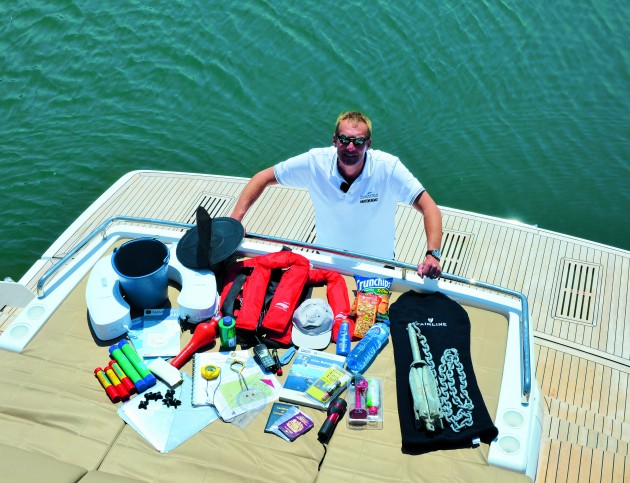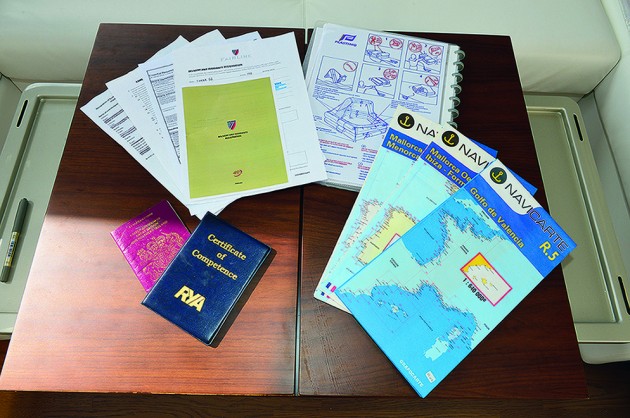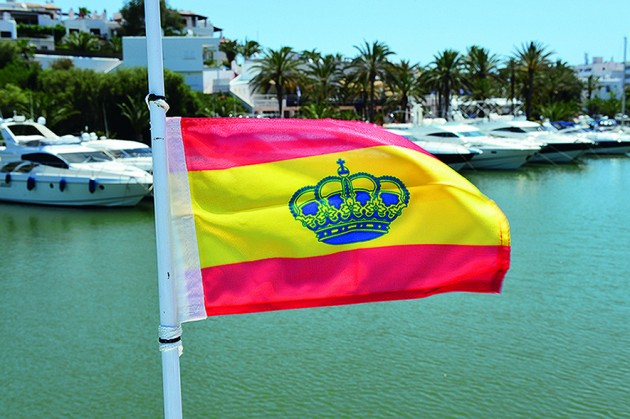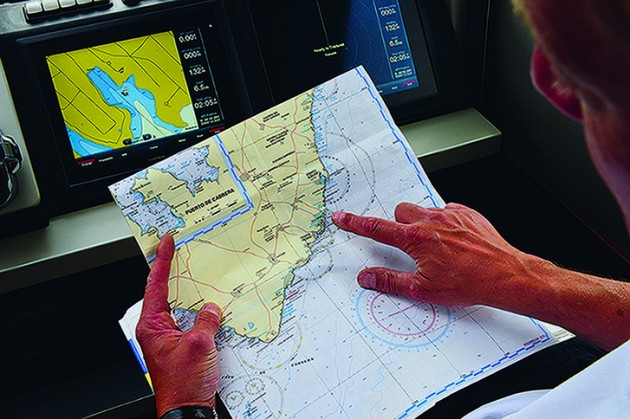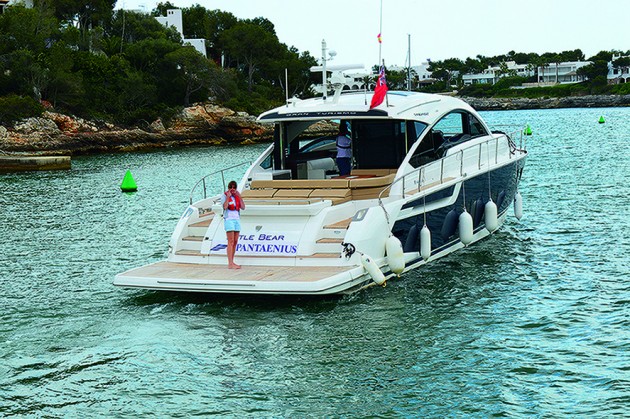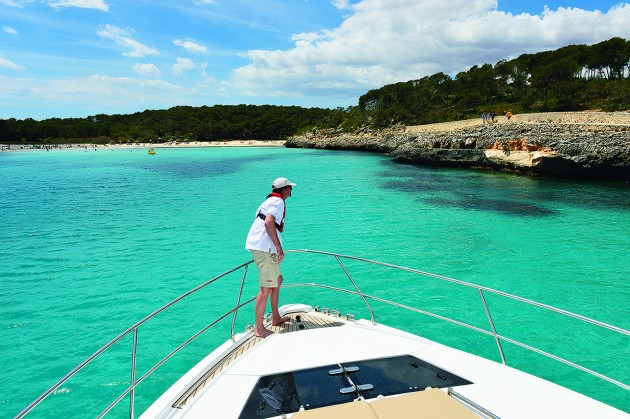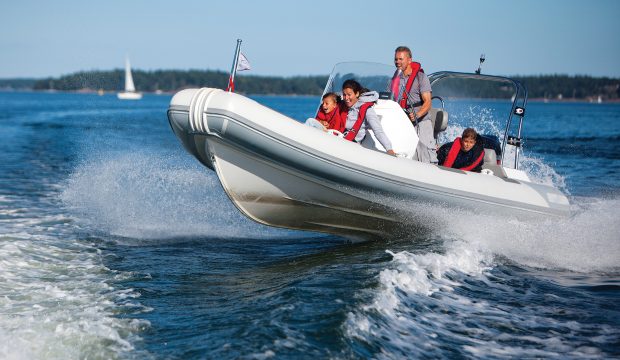In this series of Cruise Further, Cruise Safer articles and videos we plan to give you the skills and the confidence to push your cruising boundaries and make more of your boat's full potential. This article explains the basic necessities all boats need to cruise safely.
There’s no point buying a boat unless you plan to use it, but sometimes the gap between how you would like to use it and what you feel comfortable with can be hard to breach.
In this series of articles and videos we plan to give you the skills and the confidence to push your cruising boundaries and make more of your boat’s full potential.
Our aim is not replace the RYA’s excellent training courses but to add to them with practical hints and tips which only years of experience afloat can teach you.
The author, Jon Mendez, isn’t just a sea school principal and RYA instructor examiner, he’s also an enthusiastic boat owner who understands that boating is all about enjoying your time on the water. The more prepared you are, the more relaxed you will be and the more fun you will have.
It’s a message which our sponsor, Pantaenius Sail and Motor Yacht insurance, is equally keen to endorse. Have fun and stay safe!
Before you head off over the horizon the first thing you need to think about is equipping your boat in such a way that you can relax and enjoy the adventure, safe in the knowledge that you’re prepared for every eventuality.
I find it useful to break the process down into three groups: the vessel’s paperwork; the equipment it carries; the skipper and crew.
If cruising abroad, know the different documentation and kit you will need for each country you visit. Being prepared will help you immensely and mean that communicating with port officials should be hassle free and not hold up your holiday or weekend on the water. Follow our simple check lists and you’ll be ready to stretch your cruising legs in no time.
Group 1
The vessel’s paperwork
To comply with any foreign travel you will need the following:
Proof of ownership – preferably the original bill of sale with VAT status shown. There are some exceptions for older boats and some boaters have questioned whether the absence of VAT proof is as big a problem as everyone makes out but why make trouble for yourself if you don’t need to?
Insurance documentation – preferably translated into the language of the countries you intend to visit. Don’t forget to check that it covers the full extent of your cruising limits and you are aware of any restrictions on night or short-handed travel.
Registration for your vessel – if UK flagged either Part I or Part III, – the Small Ships Register.
VHF licence – for the vessel, which covers all sets carried.
Instruction manuals – for everything from the heads to the plotters together with a current list of main agents and suppliers for spares. It sounds obvious but you’d be amazed how many people keep these stuffed in a drawer at home.
Safety equipment schedules – do you know when your lifejackets, liferaft and fire extinguishers were last serviced and can you prove it? It’s vital to keep a record of what was done when for your own peace of mind as well as to comply with possible insurance policy requirements.
Printed charts and publications – don’t just rely on charts; pilot books and guides give invaluable insight into what to expect on arrival in unfamiliar harbours. Make sure they are up to date (corrections are usually available online) and check the internet for other useful information such as aerial views, although it takes practise to visualise what this will look like from sea level.
Group 2
Equipment for your vessel
You don’t need to go mad buying up every safety aid known to man but whatever you do take needs to be up to date and relevant – take particular care to ensure that all your lifejackets have been serviced recently. It’s no use having all the gear but no idea so it’s also imperative that you and your crew know how to use it and where you’ve stowed it. Training in this area cannot be emphasised enough, it can literally save your life.
For foreign travel you should also check:
Electronic charts – these can be excellent but many is the time I’ve been asked to skipper a boat with electronic charts that are years out of date. Get them updated and ensure the coverage of the areas you need is at the correct scale to show the detail you need. Courtesy flags – not only polite but often a legal requirement in some countries and raising the correct flag may ease you passage through a customs point.
MCA regulations – If your vessel is UK flagged and over 13.7m it will need to comply with the statutory equipment list covered under the MCA Class XII regulations. These cover most of the standard items such as lifejackets, liferafts, flares and fire-fighting equipment but vary according to how far from land you are travelling. The official website (www.mcga.gov.uk) is a nightmare to navigate so you’re better off searching on Google or downloading the RYA’s summary of the requirements and exemptions.
Other items we’d recommend:
A GPS-enhanced EPIRB mounted on deck so that it floats free on sinking will alert the emergency services and guide them to you.
AIS will help you see and be seen by other vessels.
A second kedge anchor to act as an emergency back up and prevent you swinging in confined spaces.
A small buoy to act as a trip line for your main anchor.
A really decent first aid kit.
A good-quality waterproof and floating hand-held VHF.
An anchor ball.
A good set of binoculars.
A decent selection of tools.
Spares for both engines and mechanical systems aboard – you may be ‘spanner inept’ but if you have the parts you will soon find a mechanic if you wave enough euros!
Pumps and bungs – Cruising further may mean it will take longer for help to reach you, so think through your plan for a major water ingress. The small electric bilge pumps fitted as standard to most boats are okay as starters but will struggle to keep up with any significant breach so consider fitting an independently driven mechanical pump and work out how you would slow down any leak. Soft wood bungs for skin fittings and cushions for a larger hole may help but consider packing some strong sheeting with cringles and lines sewn in around the perimeter in case you need to place a seal over any damage from the outside.
Group 3
The skipper and crew
You can have all the safety equipment in the world but if you or your crew aren’t in a fit state to operate it, you might as well not have bothered. So make sure you and your crew are equally well equipped with essential personal ‘spare parts’ such as:
A second pair of spectacles
Extra doses of medication
Translations of prescriptions (the medical substance not the brand)
Personal papers are another common stumbling block so check for passports, visas for relevant countries, International Certificate of Competence (ICC) or equivalent and your VHF radio licence.
Other things to consider:
Label all helm positions with the correct VHF Mayday procedure card complete with your call sign and MMSI.
Decent foul weather gear – it’s not always sunny, even in the Med, and good kit makes a world of difference.
Personal EPIRBS – useful if you are planning longer night or solo passages when the risk of falling overboard unnoticed is heightened.
Provisions – many motor boats are not geared up for catering on the move so take plenty of convenience snacks and drinks to keep the energy levels up.
Planning may not sound the most exciting part of the journey but it’s actually a great way to set the ball rolling and start building anticipation for the season ahead. It takes time but done well makes the start of your trip less nerve wracking!
Now that you’ve got that sorted we’ll move on to the practical skills that will help you cruise further and safer.
Next article: Stern-to berthing .
Subscribe to the print version of MBY
Subscribe to a digital version of MBY




